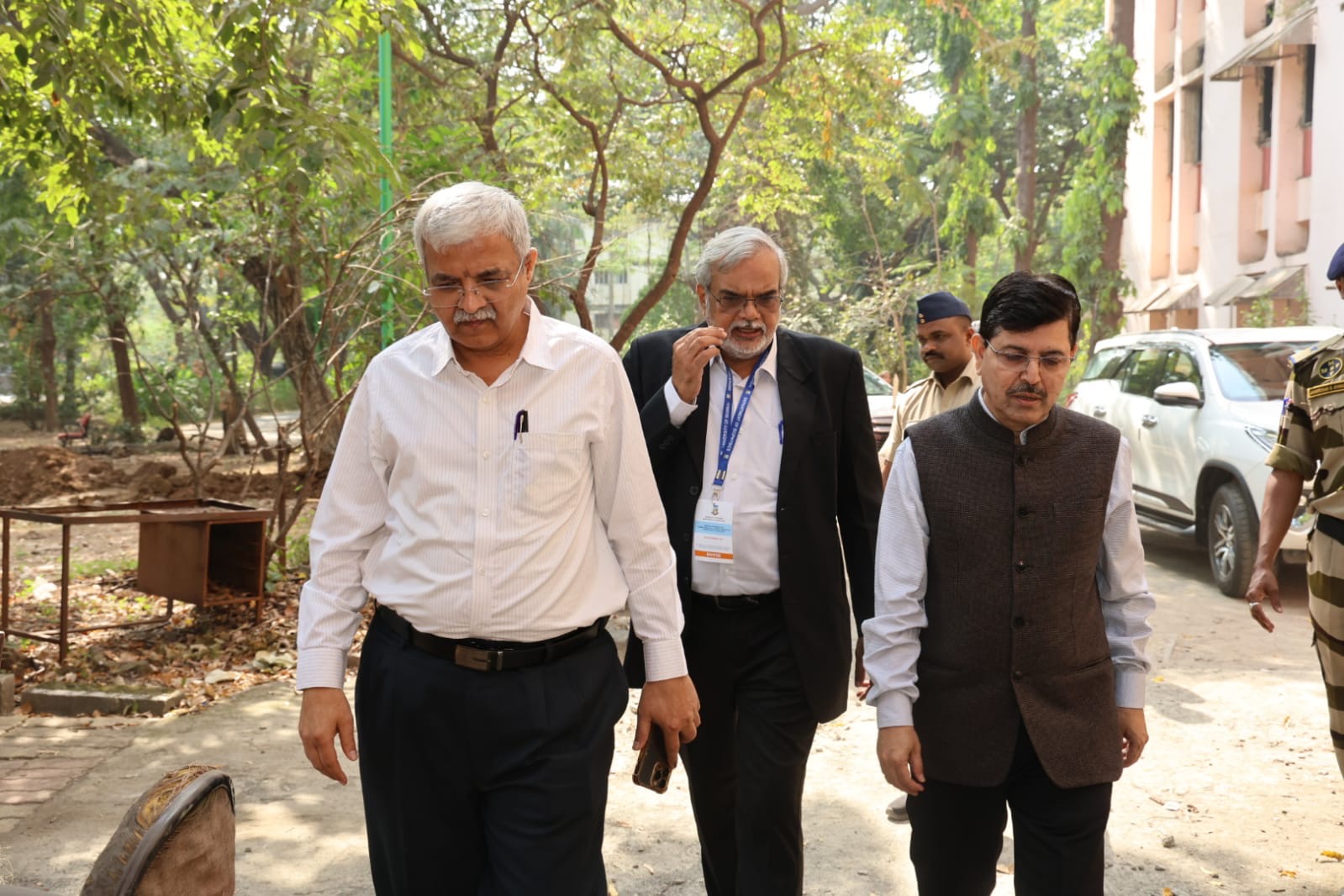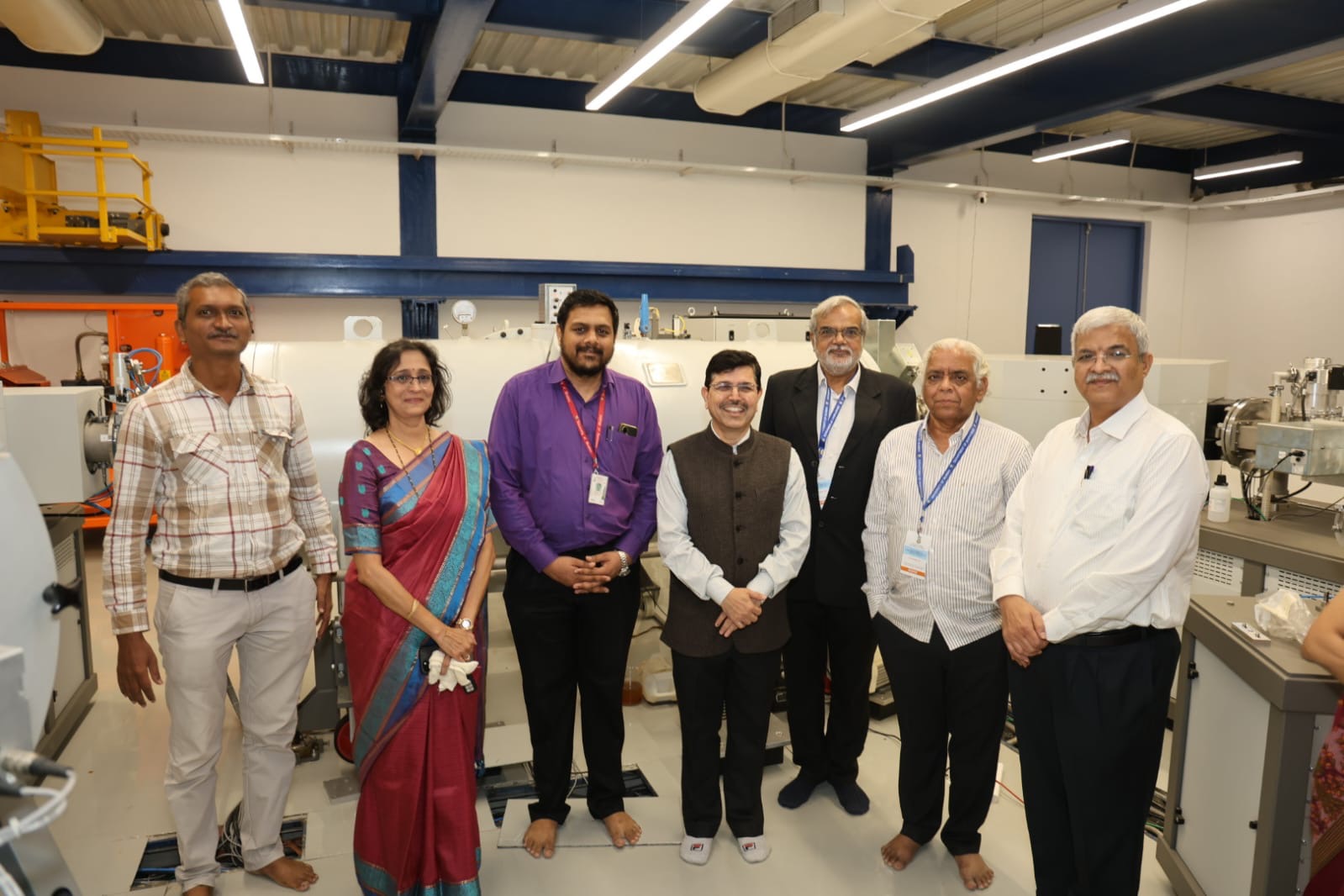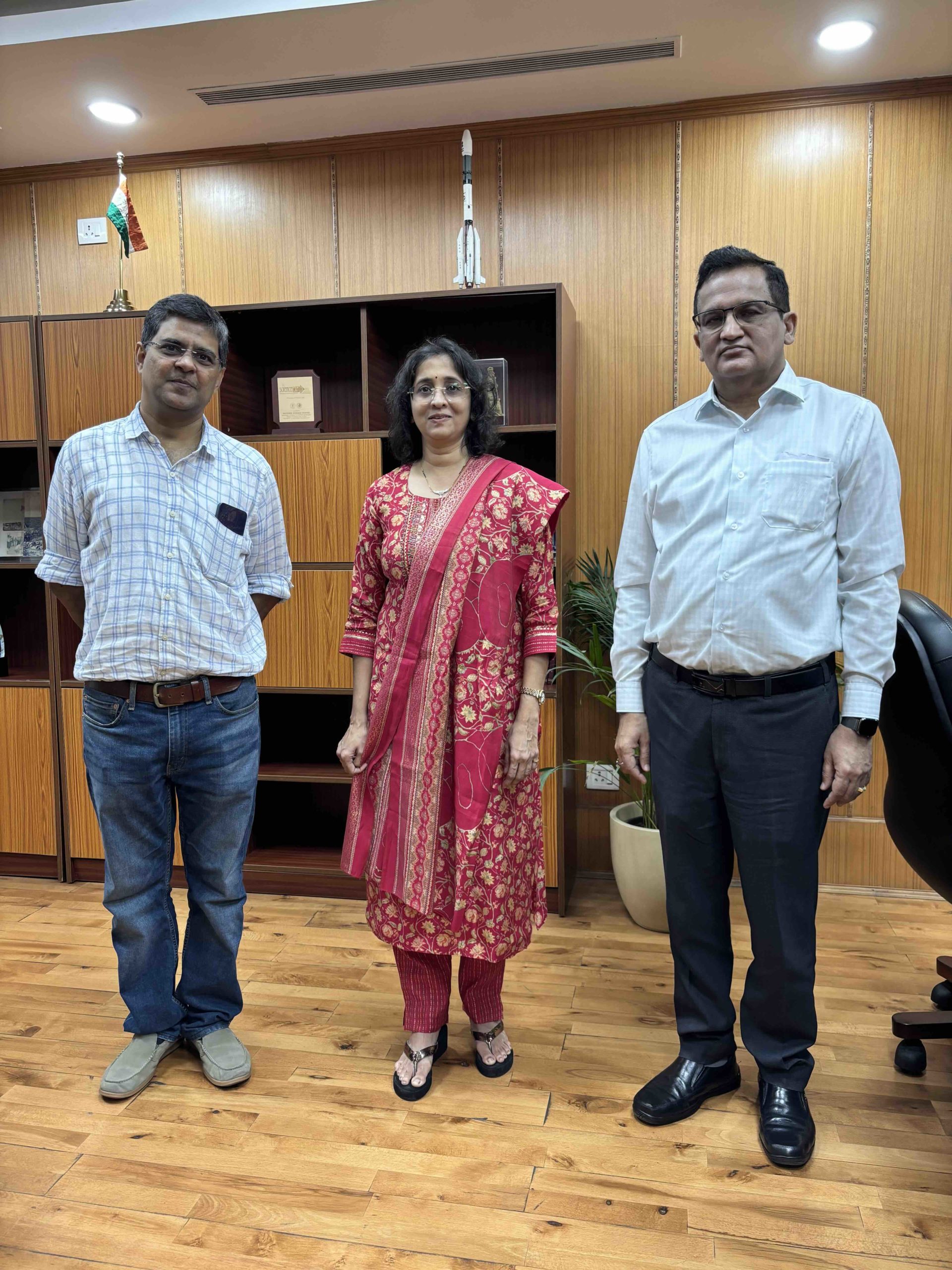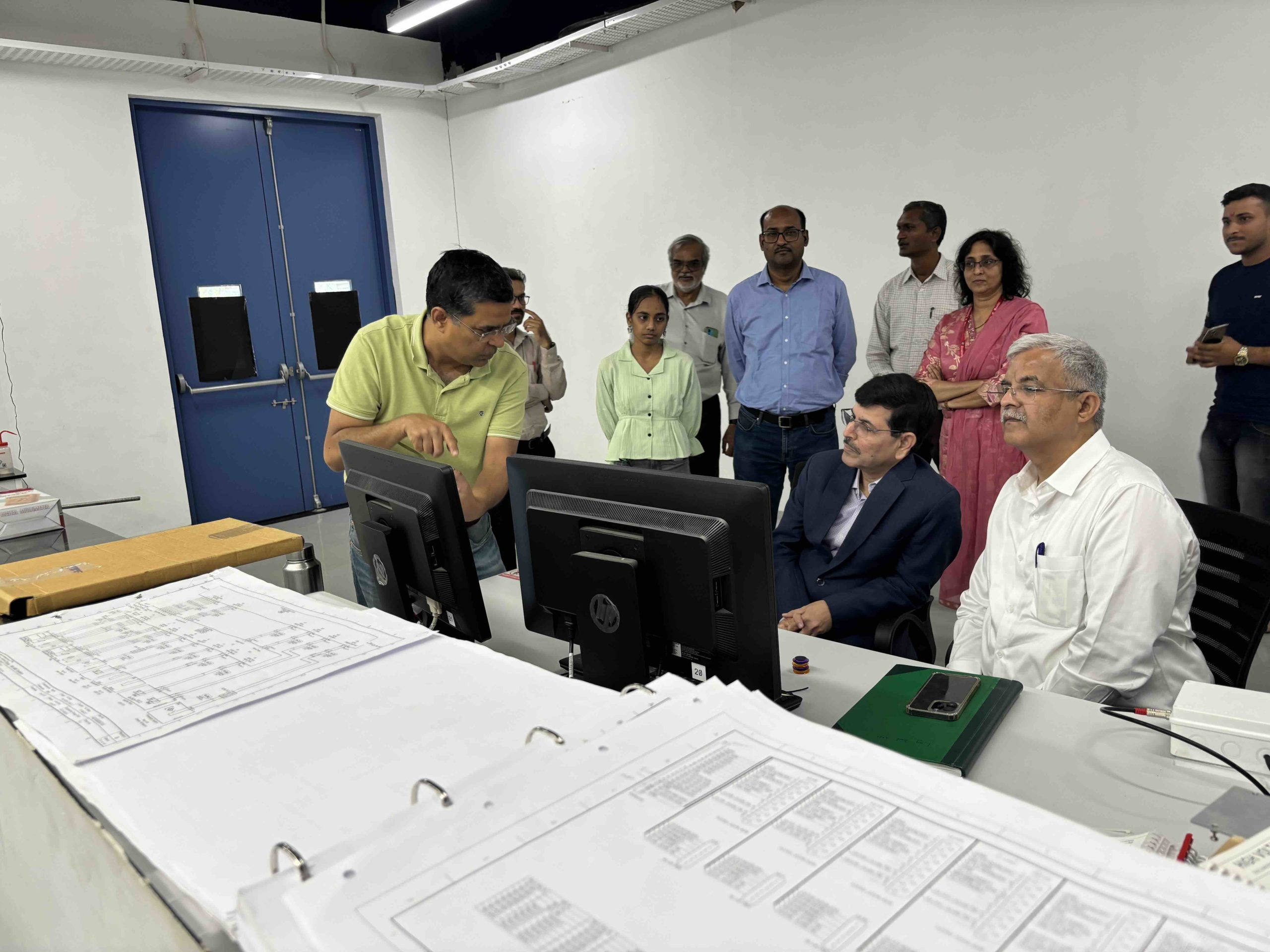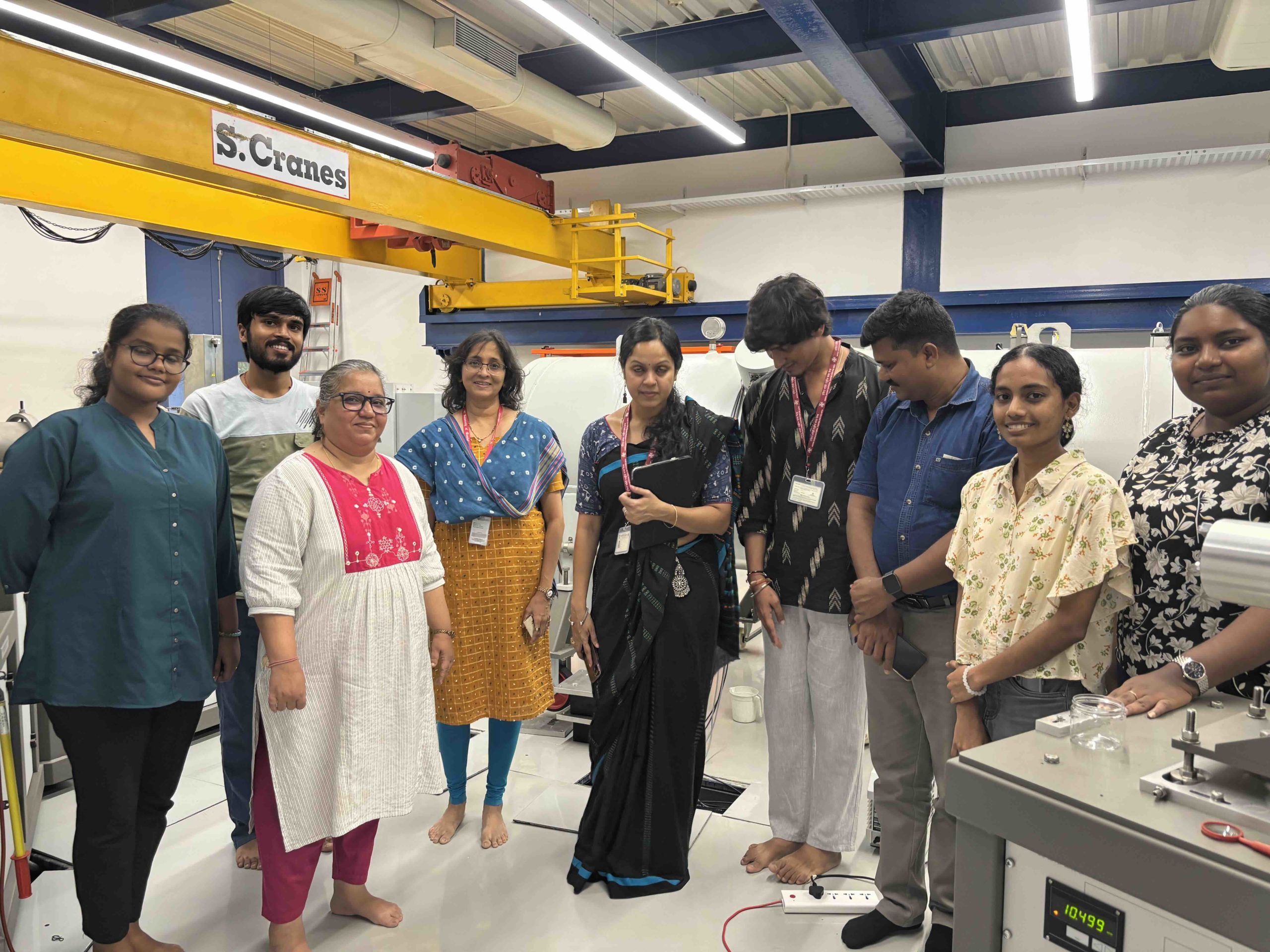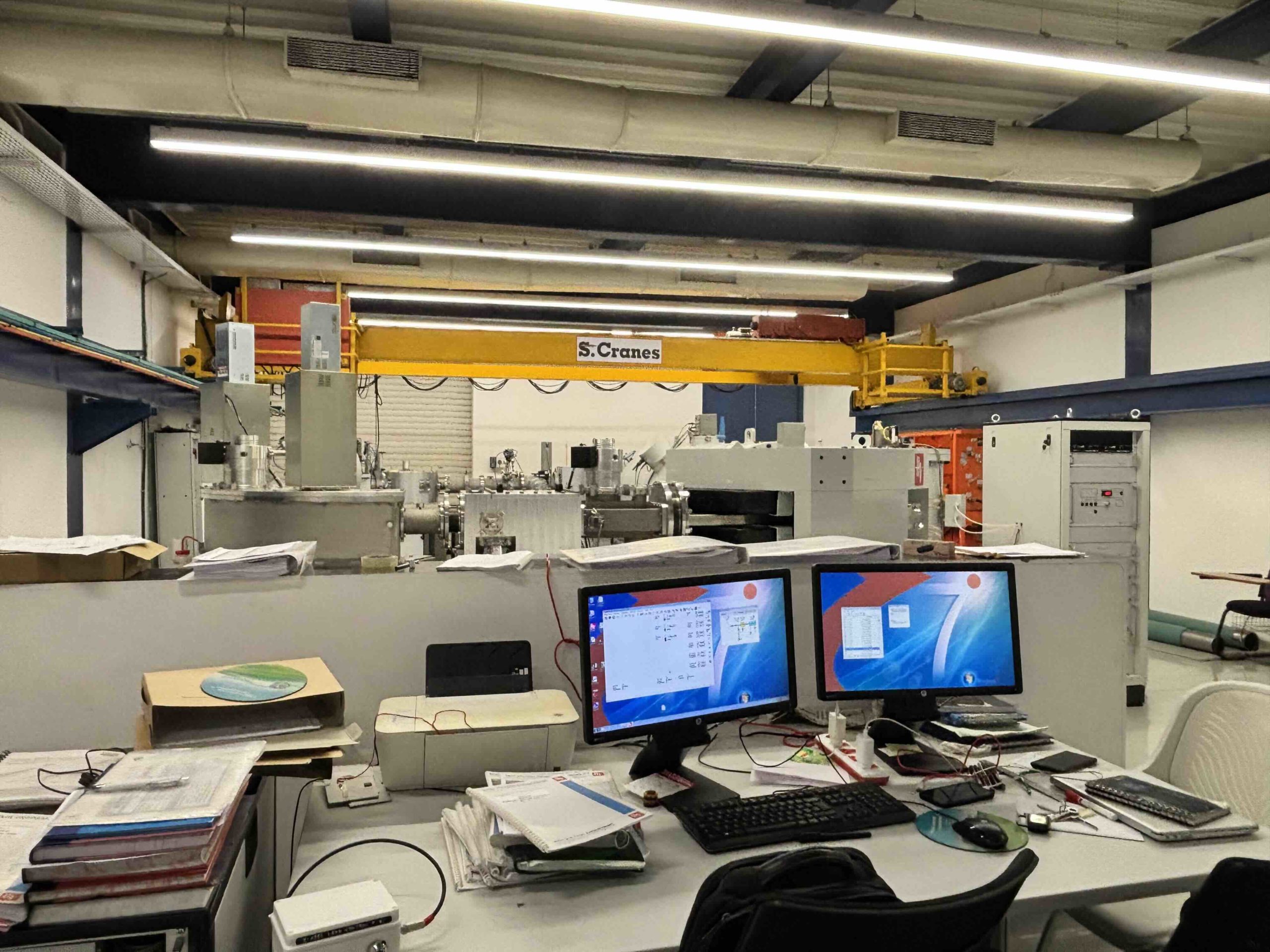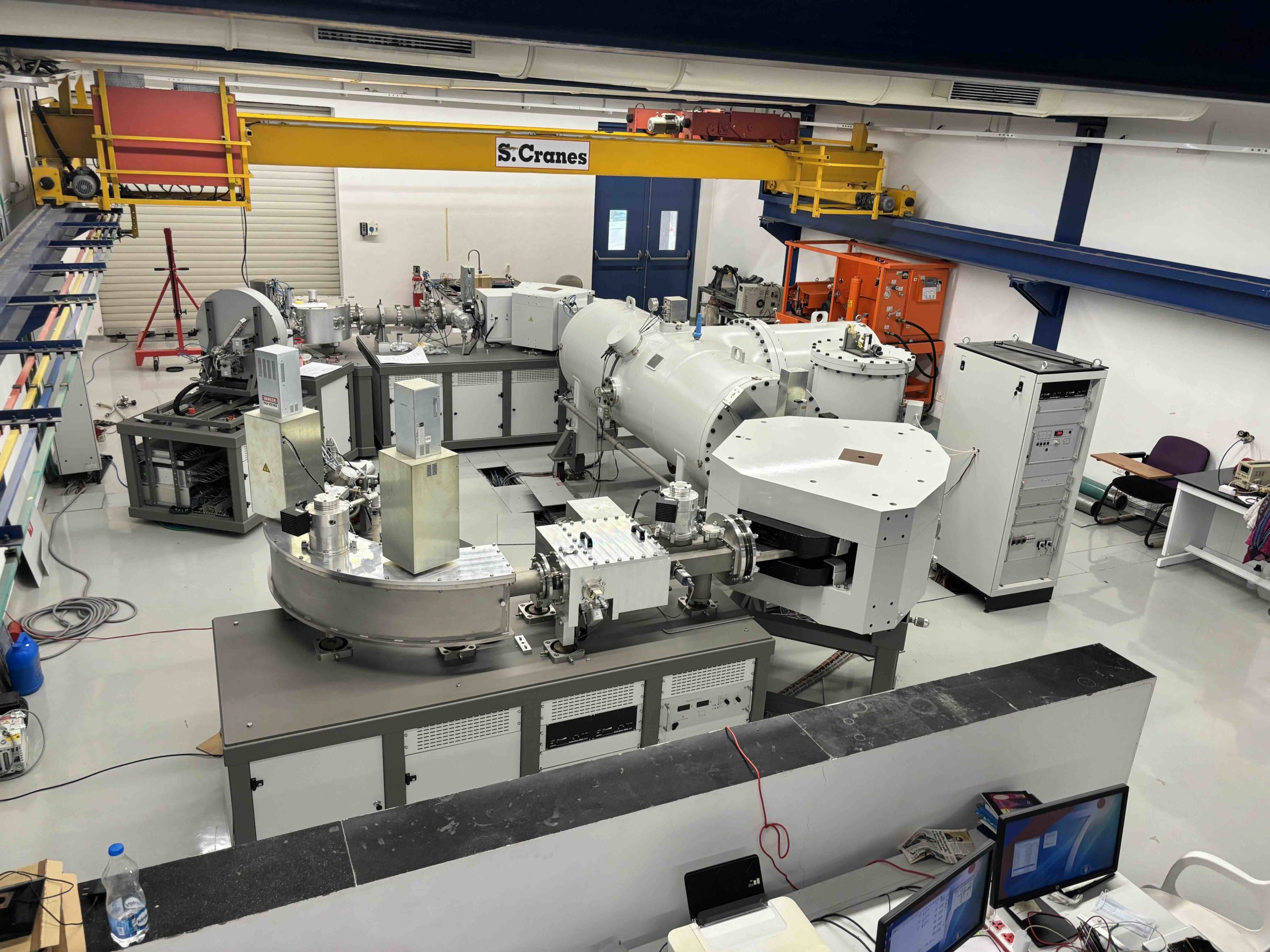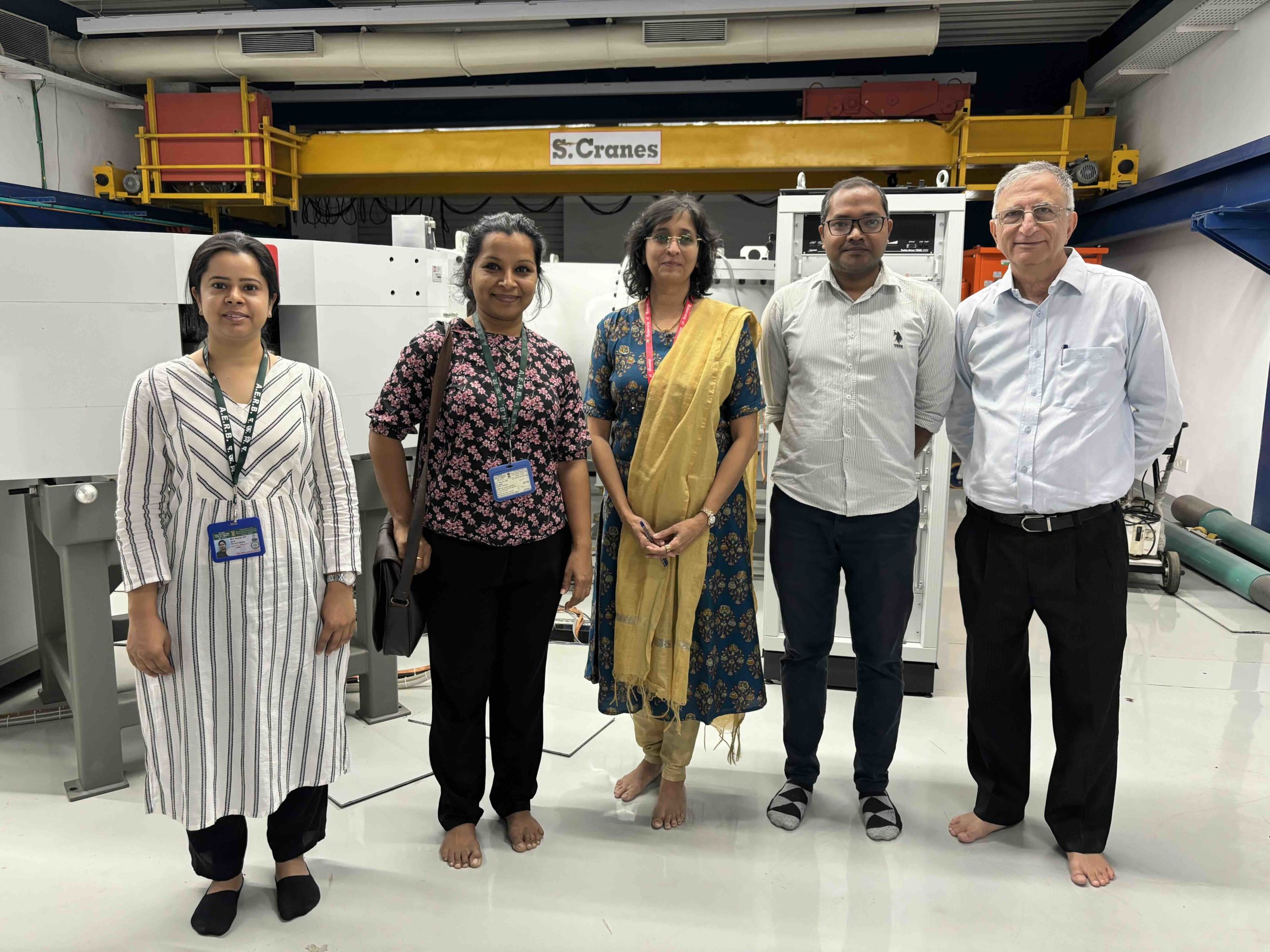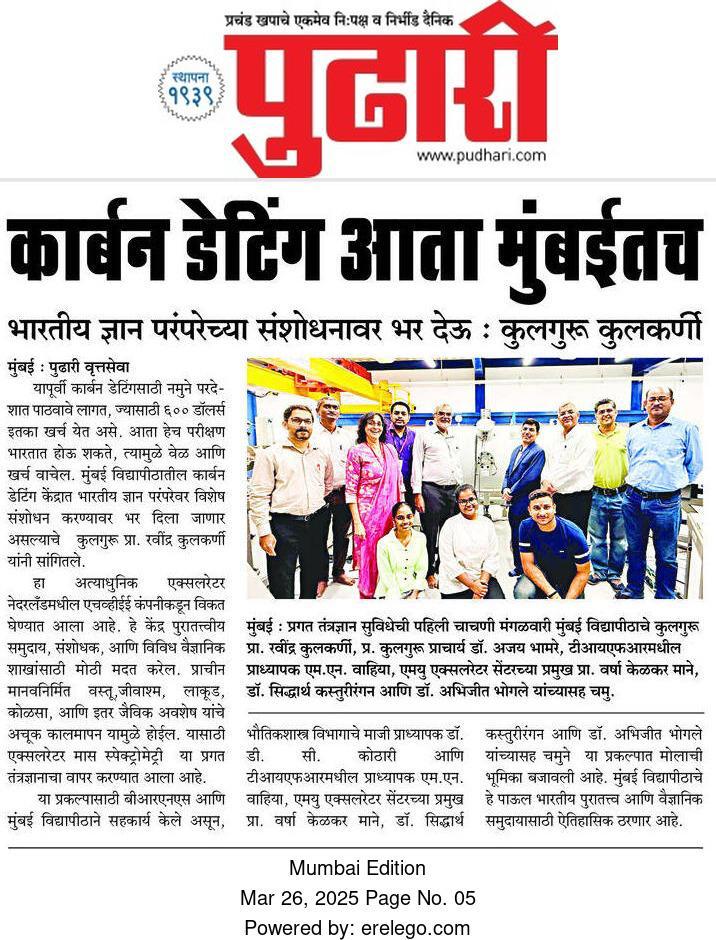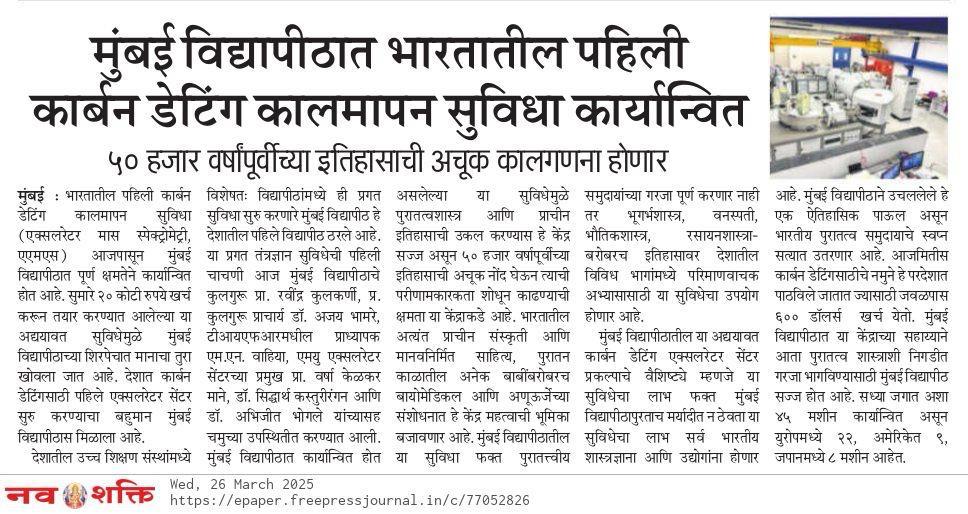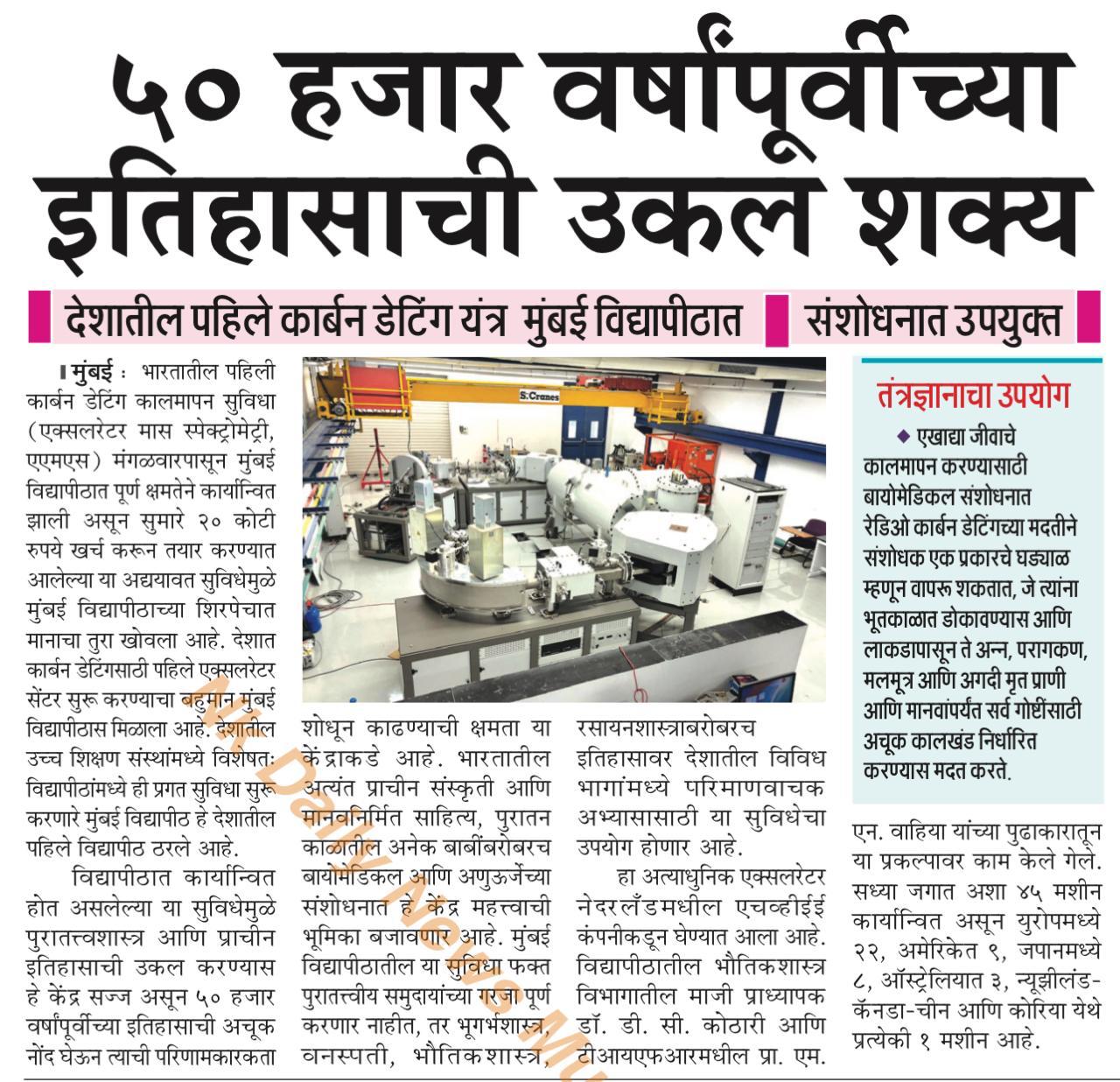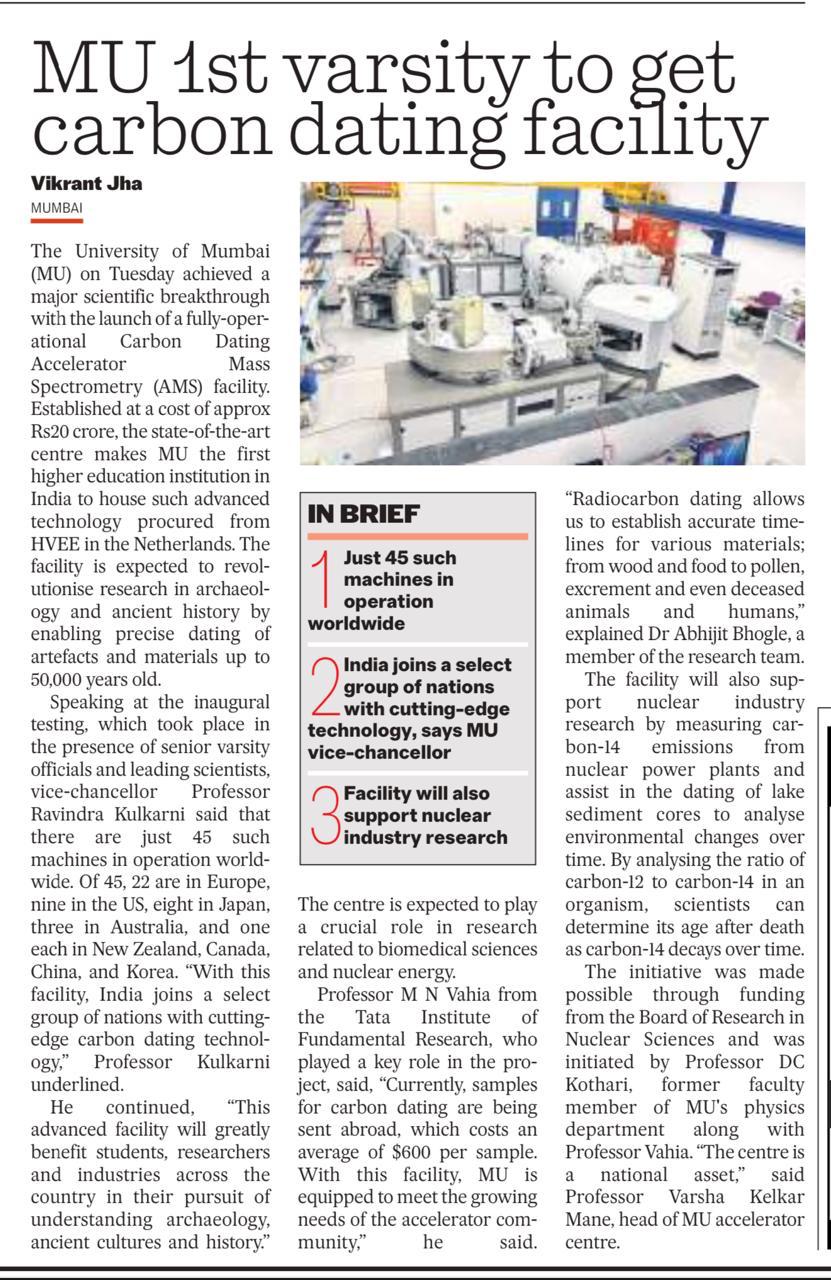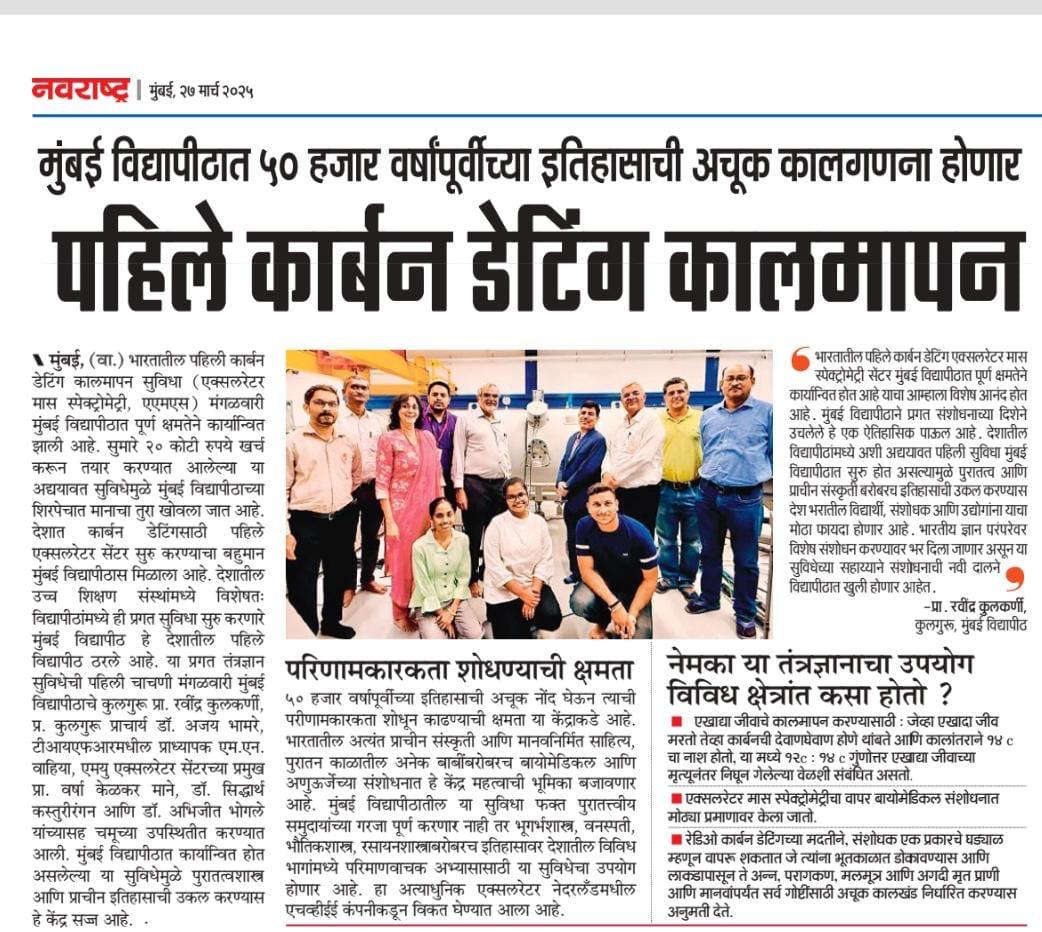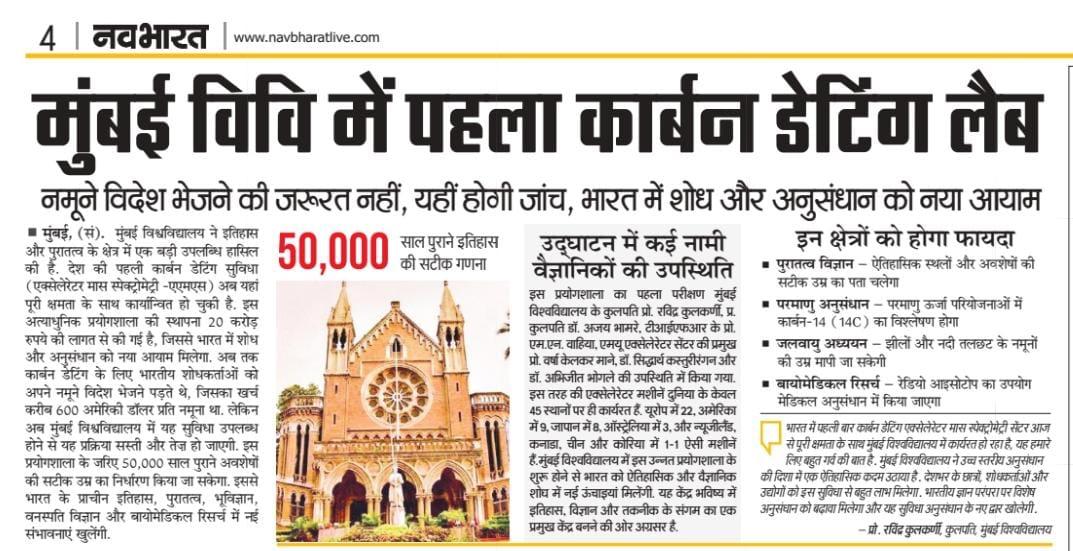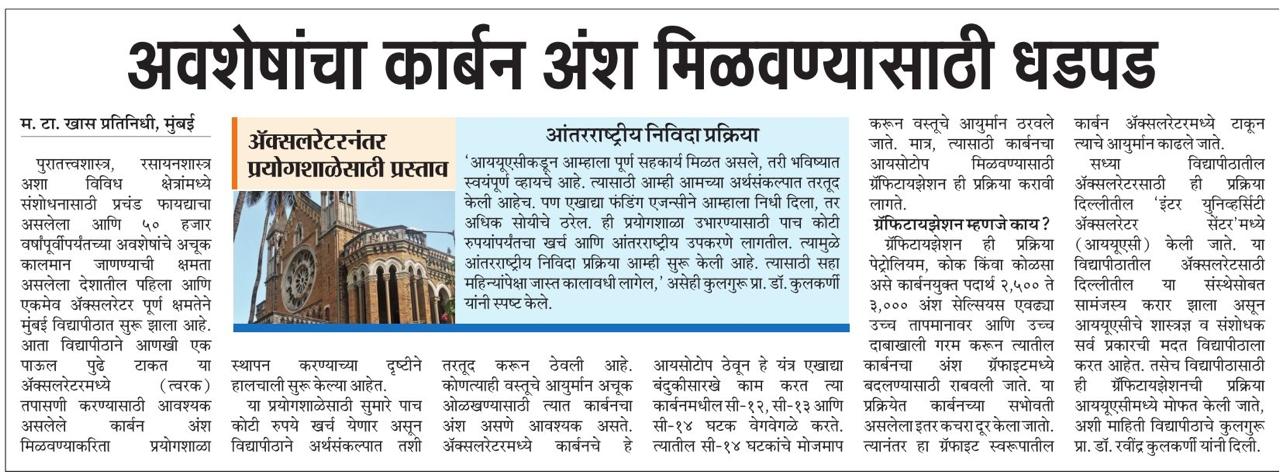About the facility
About the facility:
The University of Mumbai AMS-based facility to study carbon isotopes
(A joint facility of the University of Mumbai and Inter-University Accelerator Centre)
Objectives of the AMS Research facility:
The Study of Carbon isotopes is very important in Archaeology, Biology, Chemistry, Earth Sciences, Physics and everything in between. The Mumbai University has established a 1 MV accelerator mass spectroscopy facility in its Vidyanagri Campus with funding from the Department of Atomic Energy, Government of India through its Board for Research in Nuclear Sciences. The purpose is to undertake research and train young students. With a sensitivity to detect C14:C12 ratio of 10-15:1, the machine can address a variety of problems.
The machine is acquired from High Voltage Electrical Engineering (HVEE) in the Netherlands. It is a 1 MV AMS facility that is tuned to measure the ratios of C12:C13:C14 ratios in all types of samples including charcoal, bones, shells, papers etc.
This is the only facility of its kind in the country that is dedicated to the analysis of carbon isotopes.
The University also has other research facilities such as a Gamma Ray Exposure Facility.
Why carbon?
About Carbon
The facility is tuned to study carbon isotopes exclusively. Carbon is the atom of life and is one of the most extensively used atoms in a large variety of environments. Carbon is tetravalent, hence carbon atoms can form up to four covalent bonds since its valence shell has 4 electrons.
Carbon has two stable, naturally occurring isotopes. The isotope C12 forms 98.93% of the carbon on Earth, while C13 forms the remaining 1.07%. The concentration of C12 is enhanced in some biological materials (C4 material) while it is enhanced in some other plants (C3 material). This is due to the difference in their magnetic moment and the nature of proteins used by plants that grow in water-rich and water-starved environments.
Carbon-14 (14C) is a naturally occurring radioisotope, produced in the upper atmosphere by interaction of nitrogen with cosmic rays. It is found in trace amounts on the Earth of 1 part per 1012 atoms C12. It is found in all organic matter and its residues. The amount of 14C in the atmosphere is sensitive to solar activities but in living organisms, it is found in the same proportion as in the air. After the death of the organism, C14 decays predictably. This principle is used in radiocarbon dating, invented in 1949, which has been used extensively to determine the age of carbonaceous materials with ages up to about 40,000 years.
Studies of carbon isotopes in a sample provide information in several fields of enquiry. These include..Archaeology: India has the largest continuing history with active sites from 60,000 BC for Homo Sapiens and up to 1.5 million humanoids. The machine can provide data on dating, from 50 to 50,000 years Study of the process of fossilisation of organic material.
3.Creating a calibration curve for Indian data on C14.
Biology and medicine. India has the largest continuing history with active sites from 60,000 BC for Homo Sapiens and up to 1.5 million humanoids. It also has a large spectrum of populations with differing vulnerabilities. The machine can be used for the following studies and more:
- d13C can be used to gauge the interaction between vegetation and the environment interaction as well as the dietary practices of plant eaters.
- Pollutant tracing
- Distribution of organic and inorganic carbon
- Biochemical reactions in living systems
- Study of monsoon water 14C as a function of geographic distribution.
- Physics – movement of Carbon isotopes and formation of nanotubes
- 14C fluctuations and a calibration curve for carbon dating for the Indian subcontinent.
Earth Sciences and Astronomy
1.Studies of geodynamics and its impact on plants and animal
2.Studies of ancient meteorites
The machine is an autonomous centre under the University of Mumbai. It is administered by Prof Varsha Kelkar Mane, head of the Department of Biotechnology which is well recognised for its excellence in experimental facilities and research.
A bit of our history
There is a great need for a dedicated machine to study carbon isotopes. Such a machine can prove to be a versatile tool for research in Archaeology and other fields. In recognition of this fact, a proposal was sent to the Board of Research (BRNS), Department of Atomic Energy by Prof. Dushyant Kothari (PI) and Prof Mayank Vahia (Co-PI) in 2014. After a review by BRNS an MoU was signed on March 7, 2014 between BRNS and the University of Mumbai to acquire and install such a machine. The machine was to be tuned to study carbon isotopes only.
The project was sanctioned by BRNS in March 2014 with an outlay of Rs 10.68 crores. The University of Mumbai gave a matching grant in terms of building the infrastructure for the same. An order for such a machine was placed in July 2015 with the High Voltage Electrical Engineering (HVEE) in the Netherlands.
In 2017 BRNS entered into an agreement with UGC that several accelerators given by BRNS to various laboratories would be looked after by the Inter-University Accelerator Centre.
In 2023 Prof. Varsha Kelkar Mane of the Department of Biotechnology was given the charge of the facility and asked to get the machine working Prof. M. N. Vahia was appointed Professor Emeritus at the facility in June 2024 (work at MUAC initiated in Mar 2024)
Management Board, Mumbai University Accelerator Center
Management Board, Mumbai University Accelerator Center
| Sr No | Designation of Member | Name of the member | Role |
| 1 | Vice-Chancellor, University of Mumbai (ex-officio) | Prof Ravindra Kulkarni | Chair |
| 2 | Director, IUAC, New Delhi (ex-officio) | Dr Avinash Pandey | Co-chair |
| 3 | Pro Vice Chancellor University of Mumbai | Principal Dr Ajay Bhamre | Member |
| 4 | Director /Coordinator/ In-charge of the Accelerator Centre | Professor Varsha Kelkar Mane | Member Secretary |
| 5 | Dean Science and Technology University of Mumbai | Professor Shivram Garje | Member |
| 6 | Associate Dean Science University of Mumbai | Principal Dr Madhav Rajwade (PTVA’s Sathey College, Mumbai) |
Member |
| 7 | Head of User Department ( Assistant Professor and Head Archaeology) | Dr Prakash Masram | Member |
| 8. | Senior scientist from IUAC | Dr Sunil Ojha | Member |
| 9. | Distinguished Scientist with relevant expertise | Prof Mayank Vahia | Member |
The facility is maintained and run by:
- Professor Varsha Kelkar Mane (Head dept of Biotechnology and Coordinator MUAC)
- Dr Mayank Vahia (Professor Emeritus, MUAC)
- Dr S Kasturirangan (Assistant Professor Dept of Physics, University of Mumbai)
- Dr Abhijeet Bhogale (Assistant Professor, Dept of Physics Sathey college)
For sending samples to MUAC
- Carbonates – Direct handling of carbonate samples will not affect the results. Since the CaCO3portion is used for the radiocarbon analysis, contamination from hand oils and other organic matter will be removed during sample processing. Only the presence of other carbonates will affect the carbon dating results.
- Organic Material– Organic samples for radiocarbon dating should not be handled with bare hands because your body oils will contaminate the sample. Plastic glove contact is fine. Washing the sample in potable water is also fine (distilled water is recommended). Avoid contact with paper.
- Extraneous Matrix – Prices presume samples submitted are in a concentrated form. There is no need to remove minimally attached sediments and adhering organics. The screen should be rinsed first to remove dust. When using laboratory screens, ensure they are completely cleaned prior to use with another sample.
- Wet vs. Dry Samples– There is no need to dry the sample. However, knowing the dry weight will better allow you to estimate the amount of material to send. Sending wet samples for carbon dating is fine. If you want to dry your samples, heating at 90°C to 100°C for 4-24 hours is recommended.
- Put only one sample per Ziplock bag to avoid mix-ups during transport.
- Place Large Samples directly into Ziplock bags. Types of samples you may send: Antlers, Bones, Charcoal, Coral, Dung, Gyttja, Leather, Peat, Plants, Pottery, Sediment, Shells, Teeth, Textiles, Wood
- Wrap small/fine samples in aluminium foil to contain them in a pouch before putting them inside a labelled Ziplock bag. Examples: Extracted Collagen, Fish Otoliths, Hair, Insect (chitin), Seeds, Grains
- For Very Small Samples use vials with screw tops, microcentrifuge tubes, or counting slides before putting them inside a labelled Ziplock bag. Examples: Forams, Ostracods, Phytoliths, Pollen
- We highly recommend sending your samples in small boxes whenever possible (instead of using envelopes) to protect the physical integrity of the samples during shipment.
Sample quantity required
Sample quantity required
| Material Type | AMS Dating Recommended Sample Size |
| Antler | 1-4 grams |
| Bones (charred) Bone fragments must be completely charred inside and out. | 200 milligrams |
| Bones (cremated) Bone fragments must have a white, chalk-like colouration inside and out; no black or blue-grey mottling colourations are present. | 4 grams |
| Bones (uncharred) | 4 grams |
| Charcoal | 100 milligrams |
| Charcoal that may have limitations in pretreatment | 4 milligrams |
| Dung | 200 milligrams |
| Fish Otolith | 5-20 milligrams |
| Forams (pre-extracted/sorted) | 20 or greater |
| Hair | 100 milligrams |
| Insect (chitin) | 100 milligrams |
| Leather | 50-100 milligrams |
| Organic Sediment, Gyttja, Silty Peat | 10 grams (dry weight) |
| Peat (fibrous) | 100 milligrams |
| Phytoliths (extracted) | 300 milligrams |
| Plants and Seeds | 100 milligrams |
| Pollen (extracted) Completely neutral pH, dry and pretreated to remove carbonates | 15 milligrams |
| Pottery (charred food residue) | 100 milligrams |
| Pteropods | 100 milligrams |
| Shell, Coral, CaCO3 | 100 milligrams |
| Shell, Coral, CaCO3 | 10 milligrams |
| Teeth (full canine, incisor, or molar with roots attached) | 1-2 teeth |
| Textile | 100 milligrams |
| Wood | 100 milligrams |
Form to be filled for samples accepted for analysis
Details of the person submitting the sample
Submitter name: _____________________________________________ Date:__________
Address: ___________________________________________________________________
____________________________________________________________________
Contact number: (1) _____________________ (2) ____________________________
Sample details
Sample type:
Quantity: Large / Small or fine / Small
Large samples: (may be directly placed in zip lock) such as Antlers, Bones, Charcoal, Coral, Dung, Gyttja, Leather, Peat, Plants, Pottery, Sediment, Shells, Teeth, Textiles, Wood
Small or fine samples (to be wrapped in aluminium foil or a pouch) such as Extracted Collagen, Fish Otoliths, Hair, Insect (chitin), Seeds, Grains
Very Small Samples: (to be put in vials with screw tops, microcentrifuge tubes, or counting slides) such as Forams, Ostracods, Phytoliths, Pollen
Labelling used to identify the sample:
Description of the sample including location and history of sample collection:
Any other related data/reference:
Samples should be sent to:
Professor Varsha Kelkar Mane
Coordinator
IUAC MU AMS Facility
University of Mumbai
Vidya Nagari, Santacruz, Mumbai 400 098, INDIA
The Centre would like to raise funds to create a corpus for the long-term running of the machine.
- Benefits for donors:
1.Preferential analysis of the samples
2.Detailed support on sample preparation and sample collection.
3.Complete confidentiality to industrially sensitive processing
4.Joint publication of the results when results are to be put in the public domain.
We will be grateful for your support in any of the following manner
1.Providing corpus for long-term stability
2.Donate equipment needed for the laboratory
3.Creating a chair by which we can invite distinguish researchers for short and long-term visits
4.Provide funding for researchers to pursue their work
5.Provide funding for staff to run the facility and provide user support
Location
The Accelerator facility is located at:
Mumbai University Accelerator Centre
Opposite Department of Biotechnology
University of Mumbai
Vidya Nagari, Mumbai 400 098
Contact persons
Prof Varsha Kelkar Mane,
Professor and Head,
Department of Biotechnology, and Department of Biophysics,
Coordinator Mumbai University Accelerator Centre,
University of Mumbai
or
Prof Mayank Vahia
Prof Emeritus,
Mumbai University Accelerator Centre
University of Mumbai
- Radiocarbon dating of charcoal samples from Rakhigarhi using AMS, Mayank N Vahia, Pankaj Kumar, Abhijeet Bhogale, D C Kothari, Sundeep Chopra, Vasant Shinde, Nilesh Jadhav and Ranvir Shastri, Current Science, 111, 27-28, 2016
- Summer training/OJT
- Research project
- Facility visit
- Teachers training

